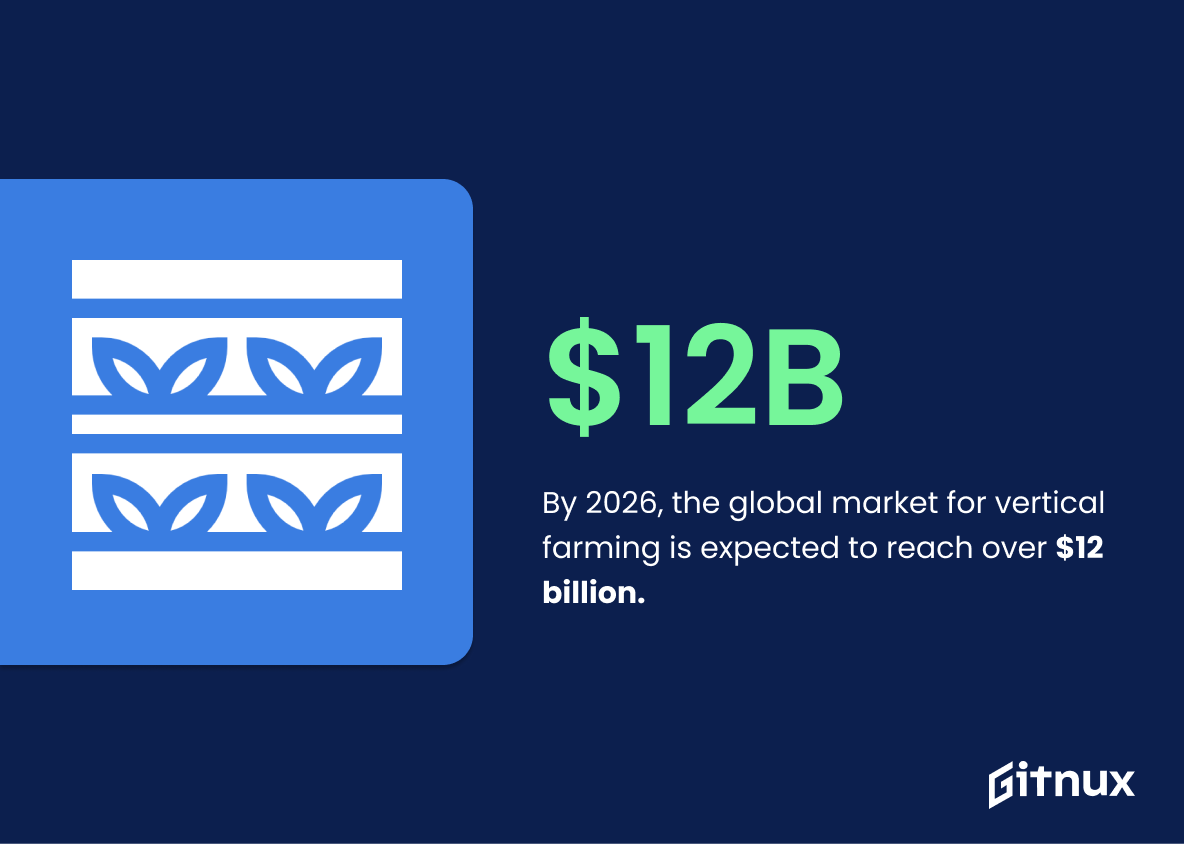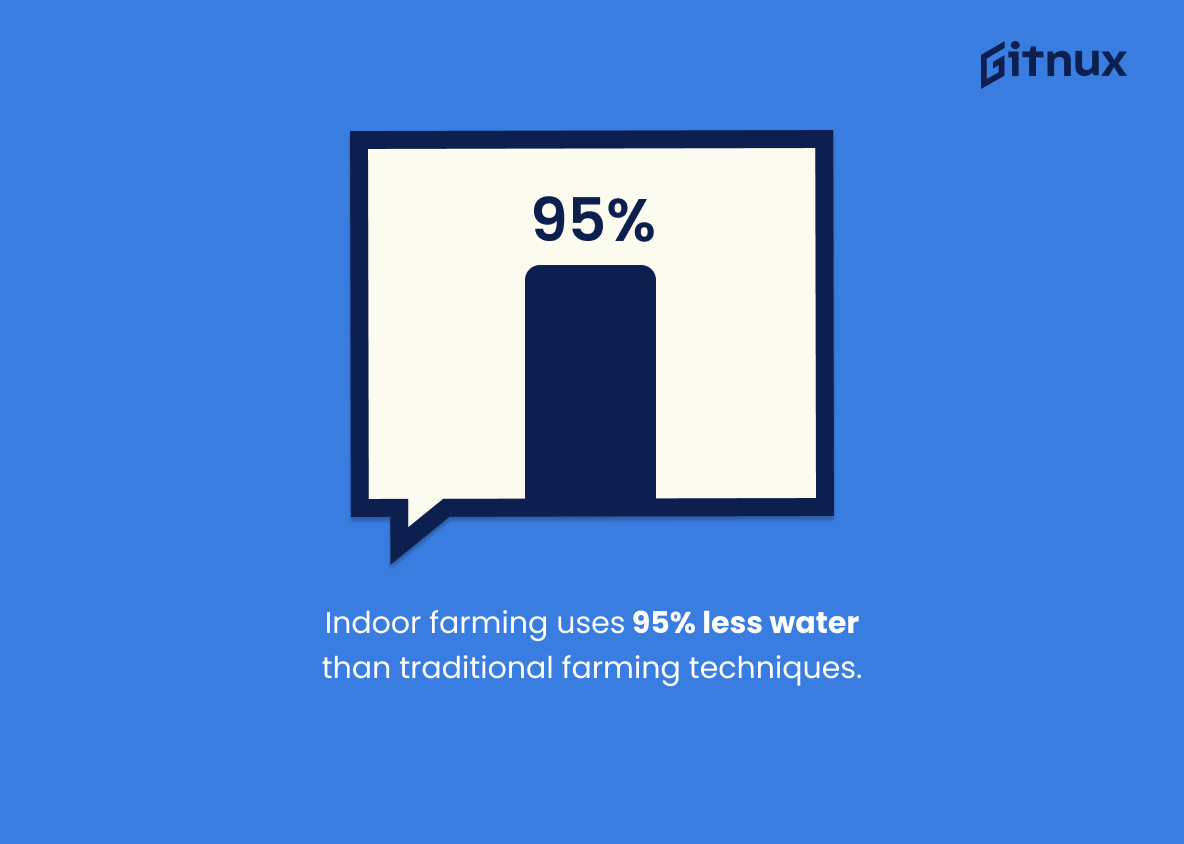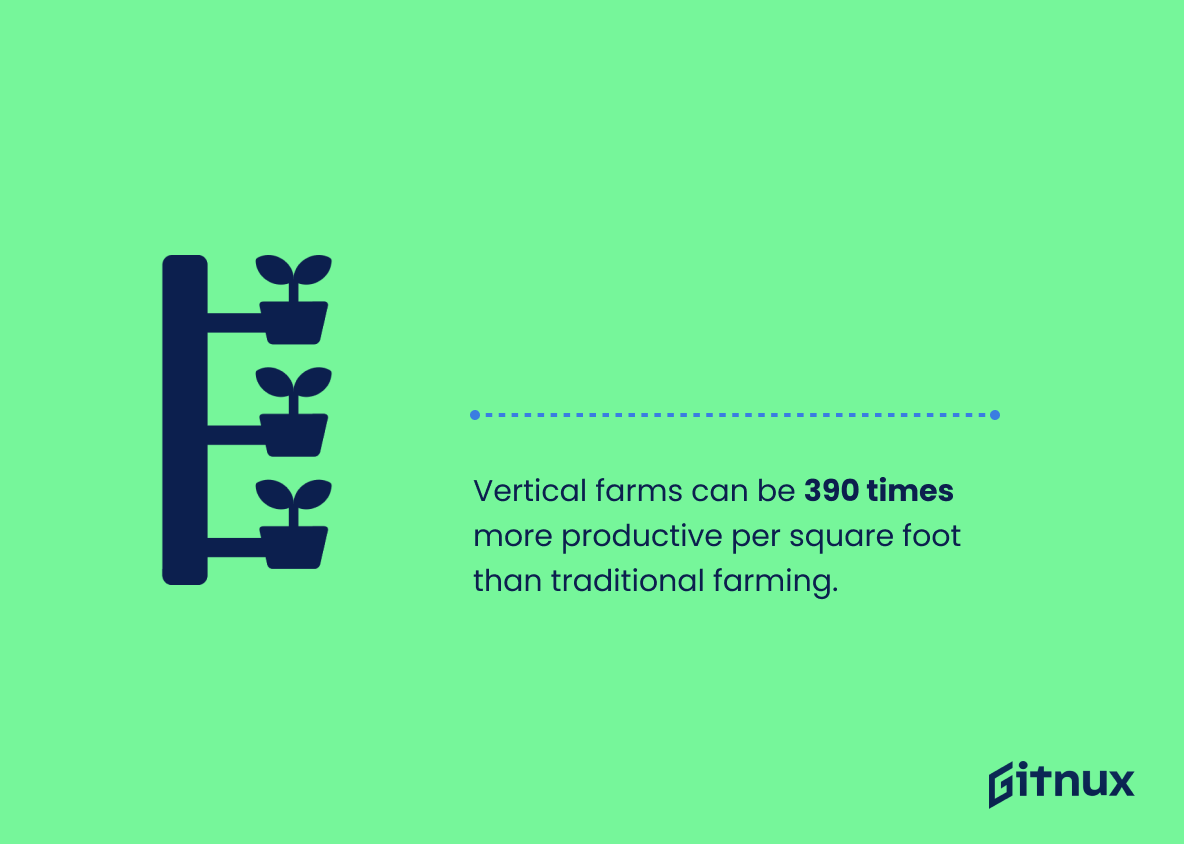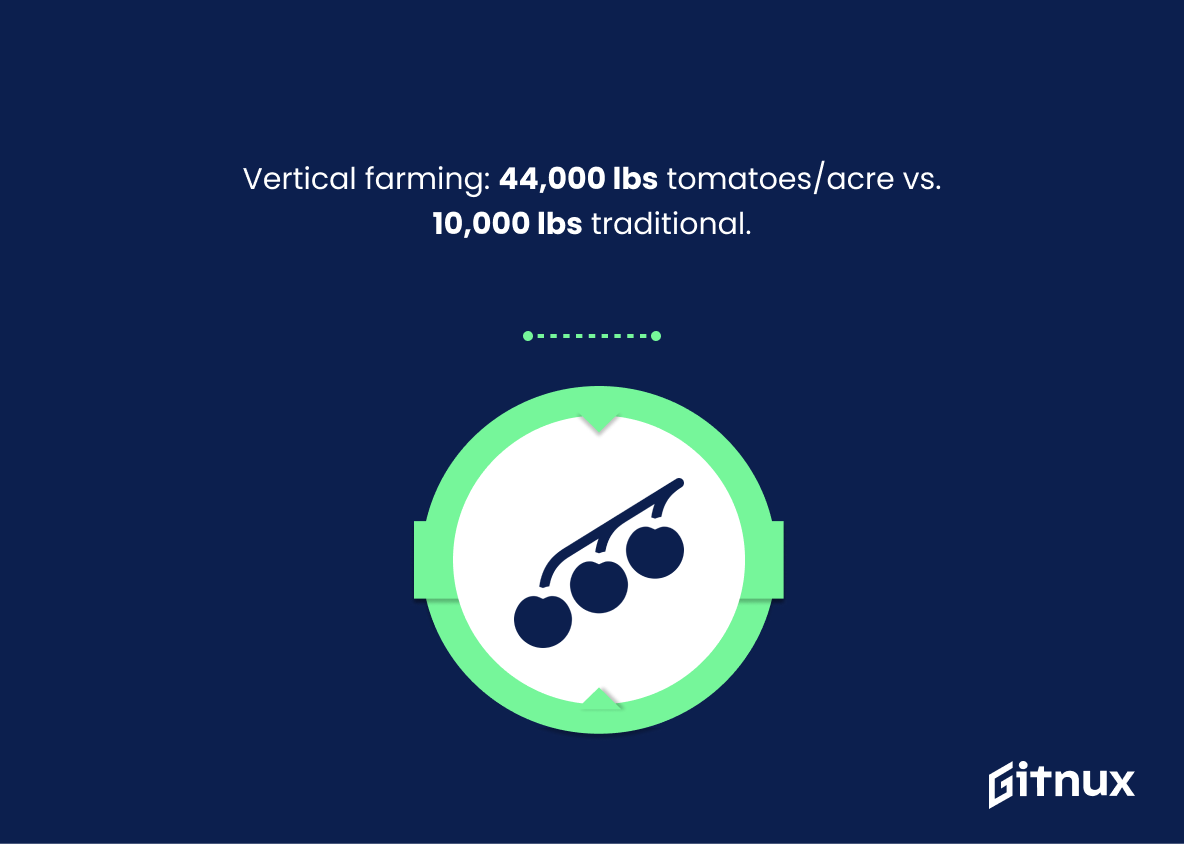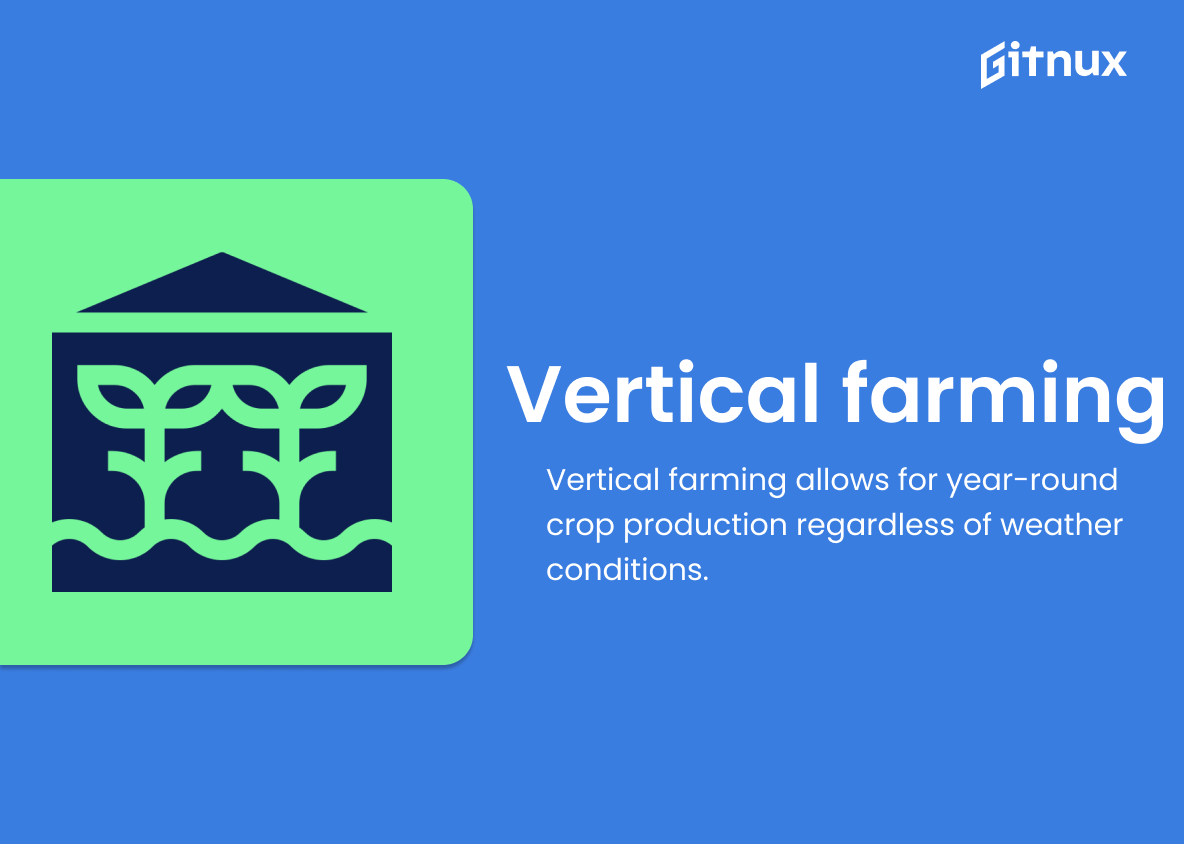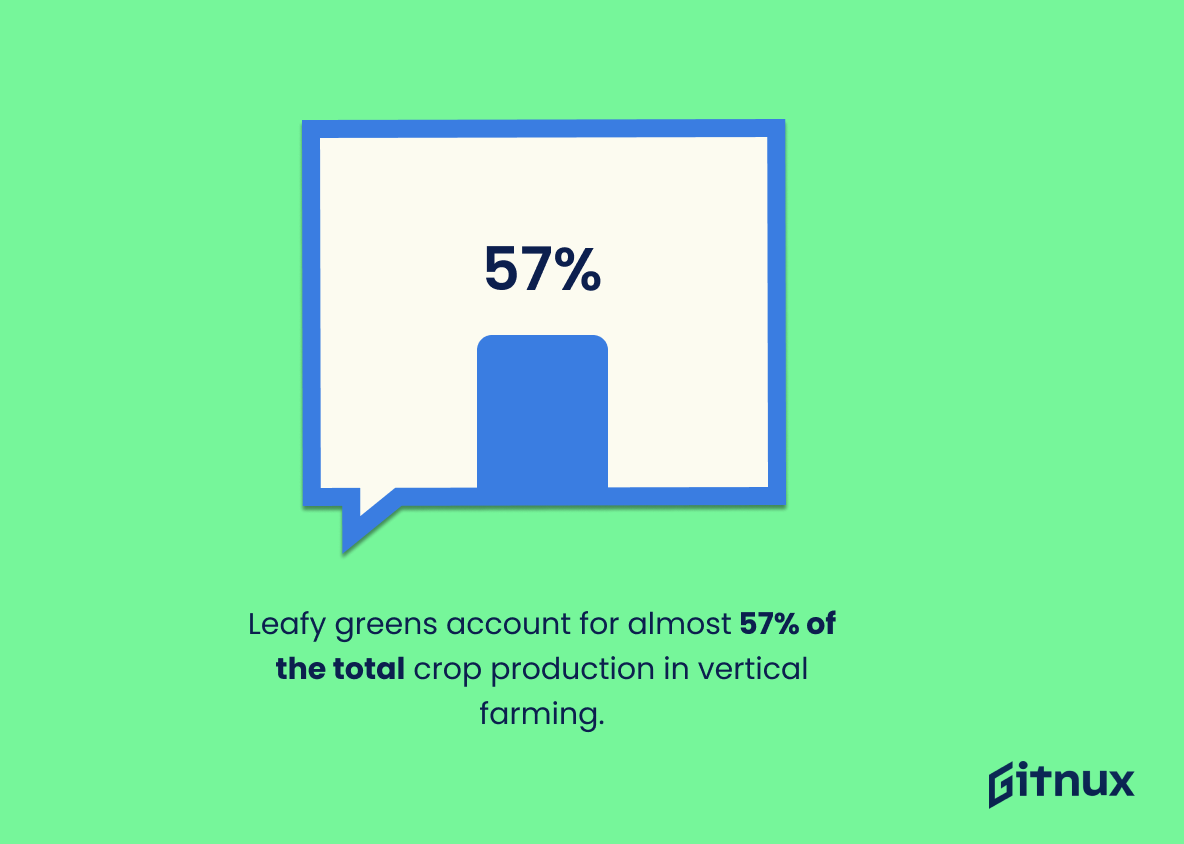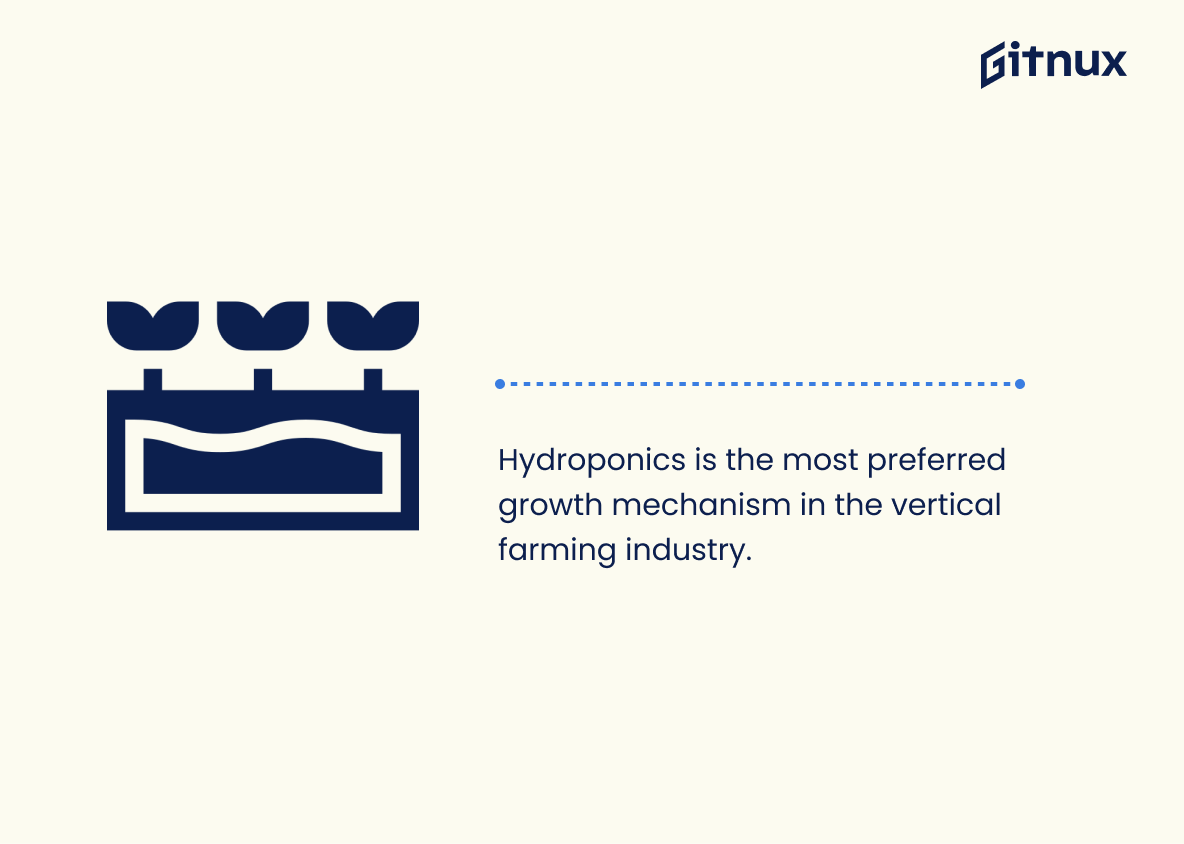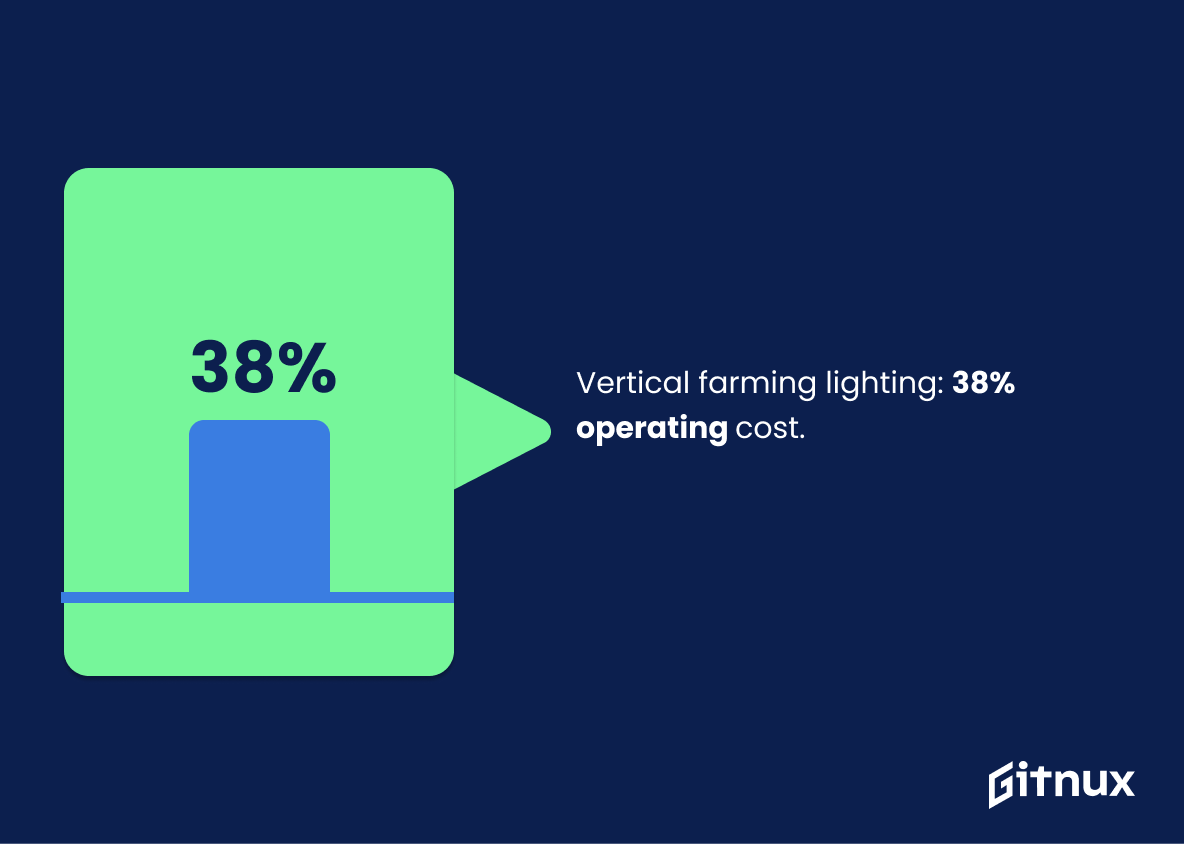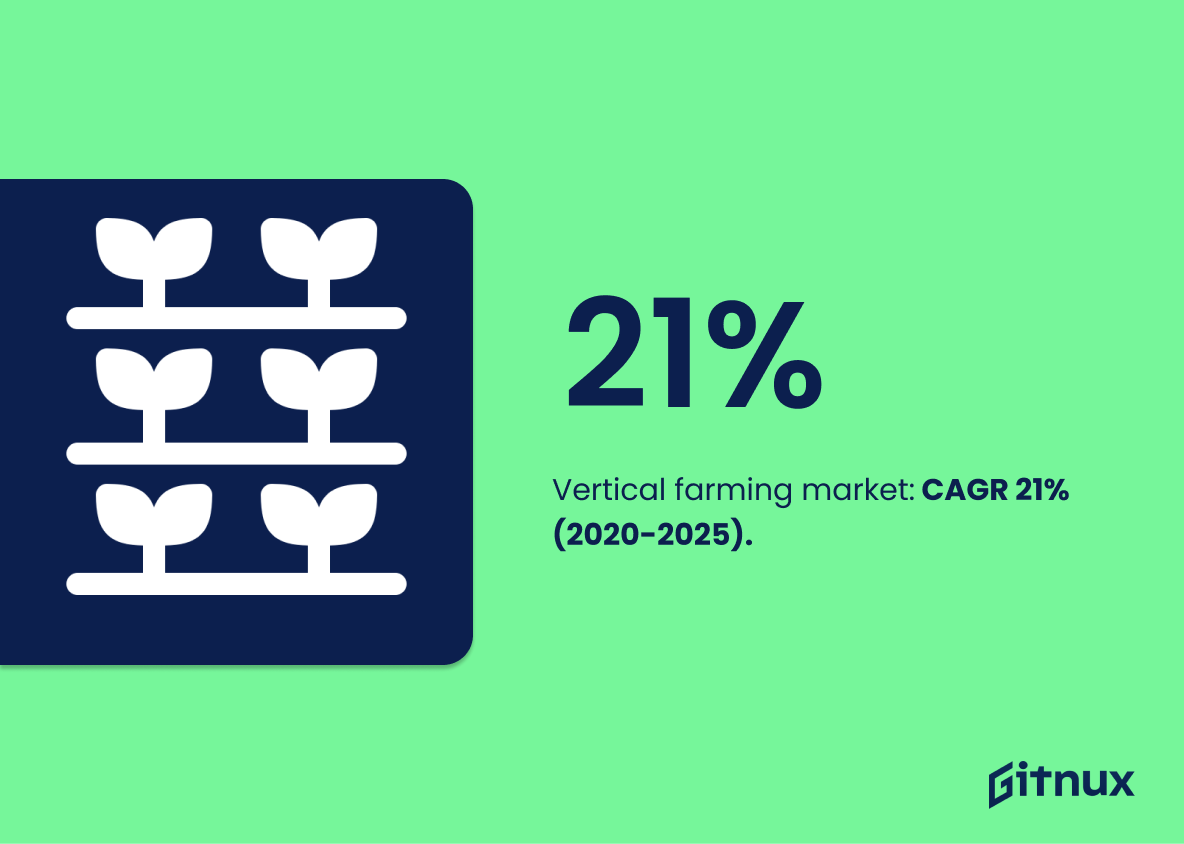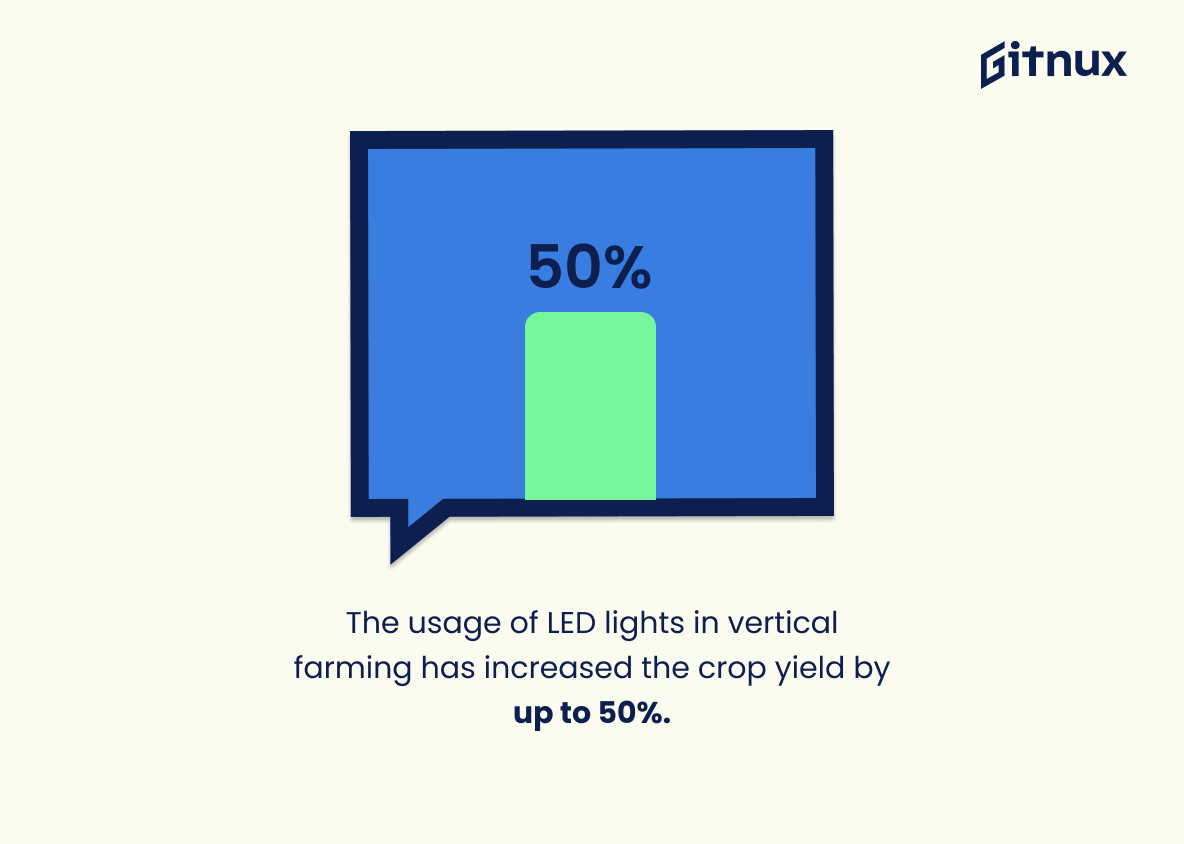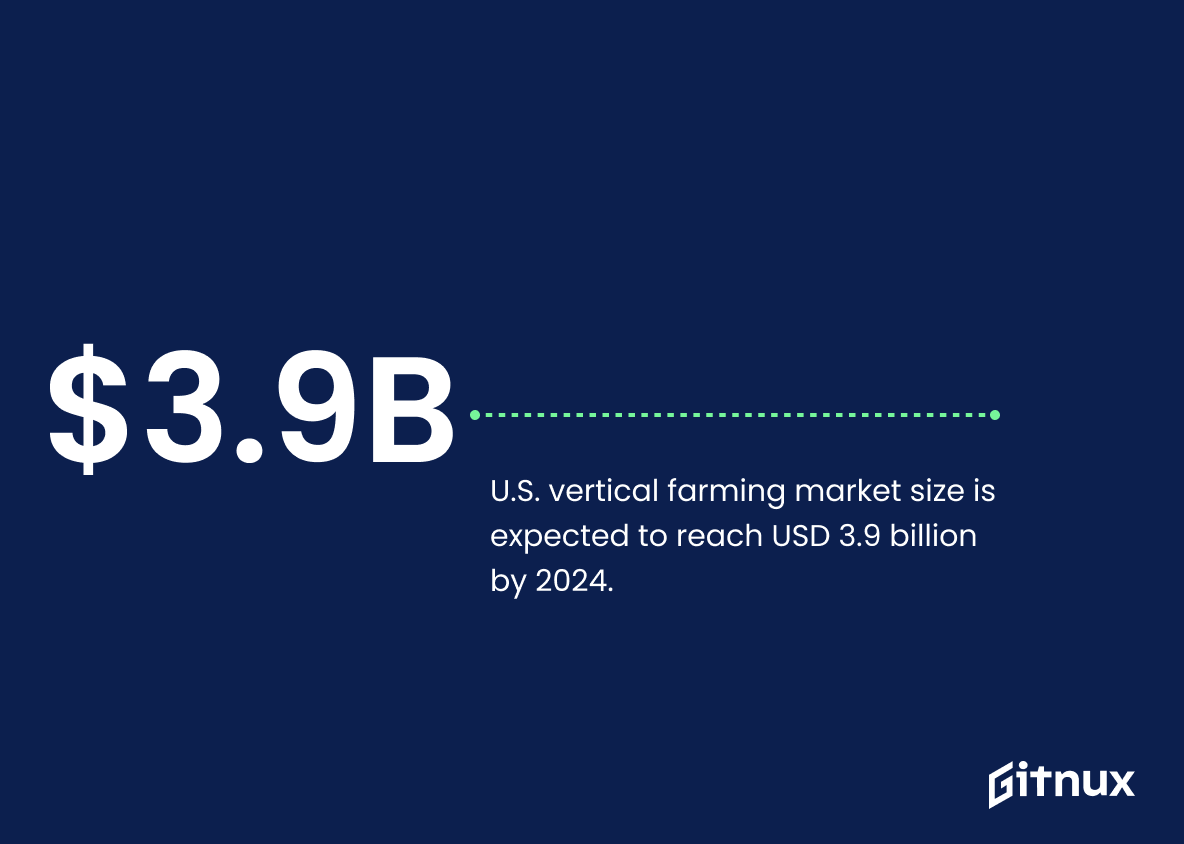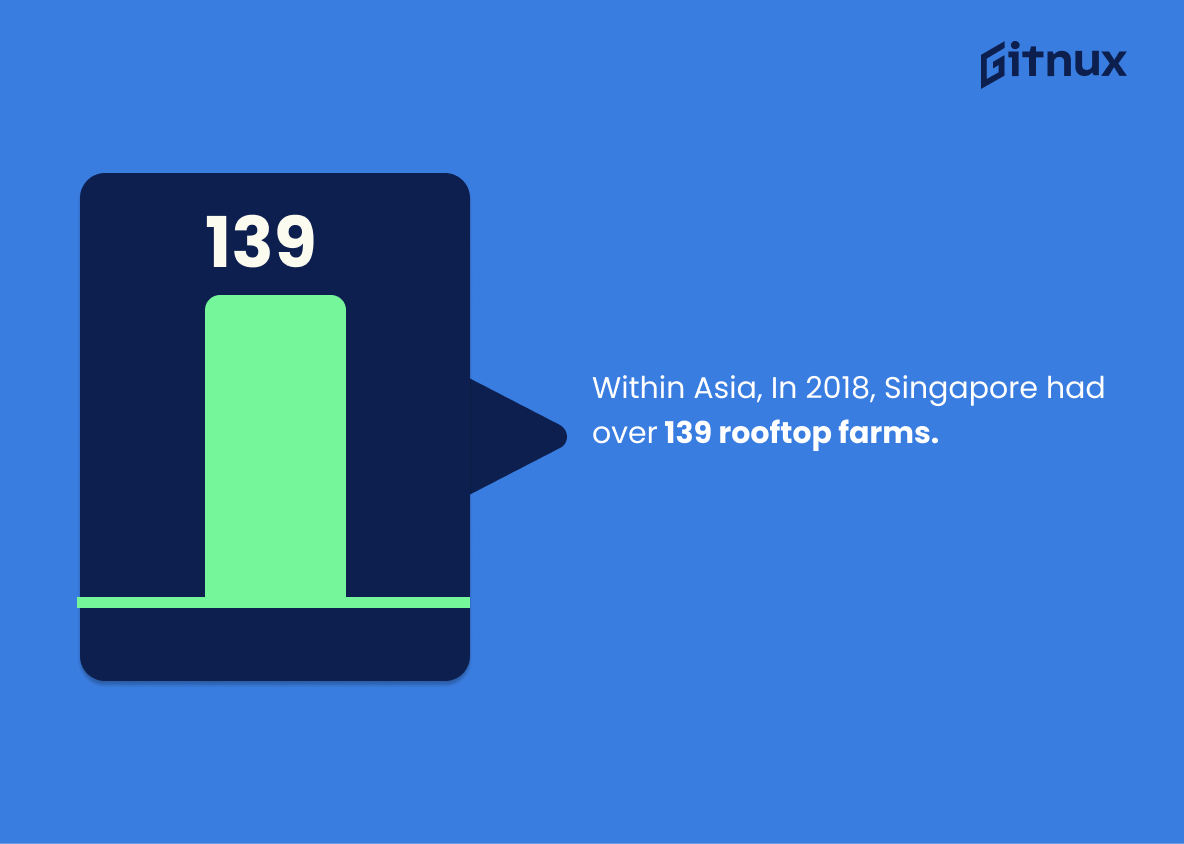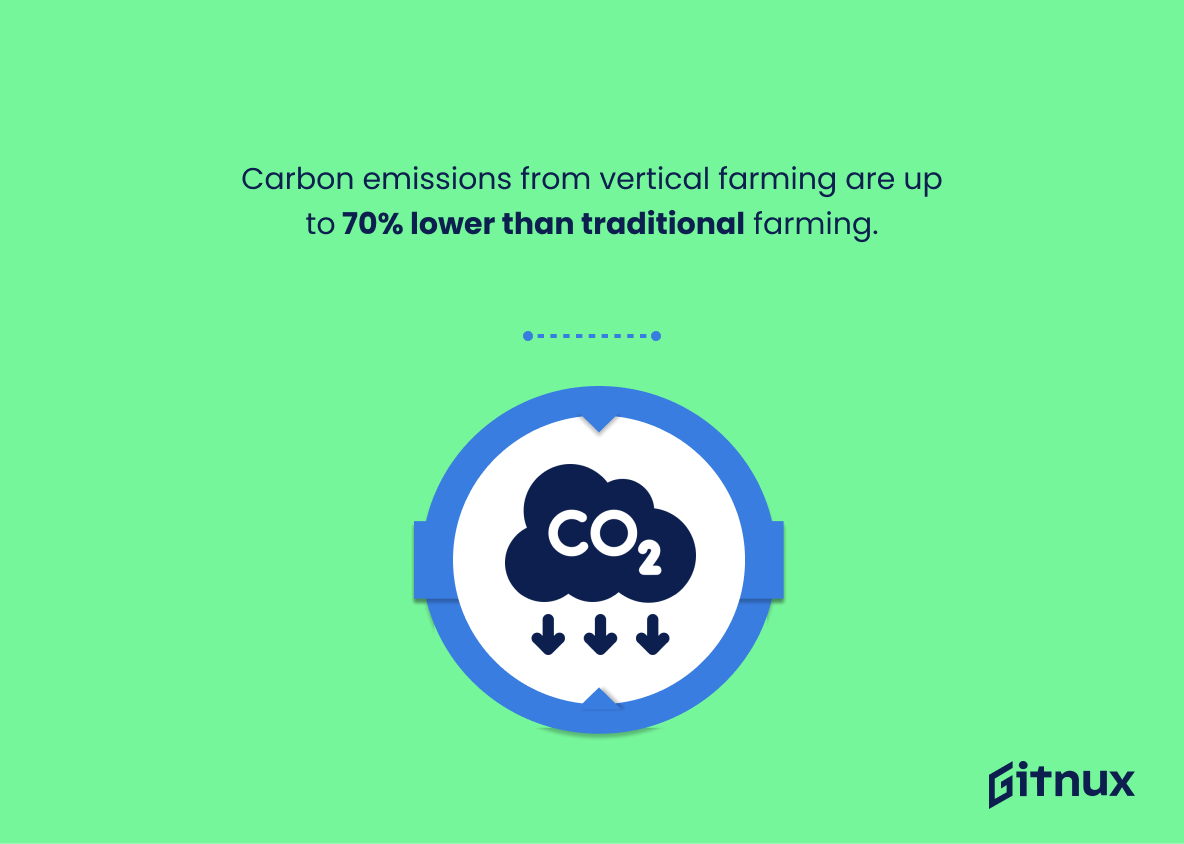In this technological era, traditional farming is undergoing a ground-breaking evolution, opening its doors to emerging innovations. Among these cutting-edge agricultural practices, vertical farming stands out, revolutionizing how we grow food efficiently and sustainably. As we dive deeper into the 21st century, this new farming industry has gained immense traction and seen remarkable growth.
This blog post brings you the latest statistics about the vertical farming industry, exploring its significant growth factors, its market trends and the potential it holds for the future. Whether you are an investor eyeing opportunities, a curious agricultural enthusiast, or anyone interested in sustainable growth, this data-driven insight into the vertical farming industry will offer compelling reading. Let’s unfold the intriguing world of vertical farming and understand its transformative influence on the global food production landscape.
The Latest Vertical Farming Industry Statistics Unveiled
By 2026, the global market for vertical farming is expected to reach over $12 billion.
Peeling back the layers of the predicted $12 billion worth of the global vertical farming market by 2026 paints an intriguing tale for our readers. First and foremost, it serves as a powerful testament to the skyrocketing growth and potential of this futuristic farming approach. It undeniably shows that vertical farming, mired in skepticism just a few years ago, has leaped out of the experimental stages and is on a trajectory to becoming a major player in the global agricultural sector.
Moreover, it signals that investment in vertical farming technologies is not only booming, but is likely to yield significant returns in the future. This also underscores a growing global recognition and acceptance of vertical farming as a sustainable, viable solution to the problem of shrinking arable land and an expanding human population. This projected benchmark, then, is more than just a number – it offers a fascinating glimpse into the fertile growth and potential of the vertical farming industry.
Indoor farming uses 95% less water than traditional farming techniques.
In the canvas of vertical farming industry statistics, the revelation that indoor farming utilizes 95% less water than traditional farming methods takes center stage. It paints a vibrant picture of not just resource efficiency, but also sustainable solutions to environmental dilemmas.
This intriguing piece of data commands attention, as it signifies how this revolutionary farming methodology substantially minimizes water wastage, a monumentally critical aspect amidst an era besieged by water scarcity issues worldwide. Hence, it adds to the allure of vertical farming, encouraging both entrepreneurs and traditional farmers to take notice and consider this futuristic alternative for a sustainable tomorrow.
Vertical farms can be 390 times more productive per square foot than traditional farming.
Peering through the lens of numbers unveils a fascinating revelation around the efficiency of vertical farming. Picture this, the potential productivity of vertical farms skyrockets a colossal 390 times per square foot compared to traditional farming. This astonishing figure propels the concept of vertical farming from experimental curiosity to a serious contender in the world of agriculture.
Depicting such a transformative leap in productivity, this piece of data breathes life into the argument for a paradigm shift in farming practices. It adds a robust empirical dimension to the discourse – a nearly four hundredfold improvement is not just an incremental change, it’s a veritable revolution.
In the discourse over scarce resources and sustainability, this statistic hits the bullseye. It elucidates the enormous gains possible, all within a drastically reduced physical footprint. This not only implies that land usage can be more efficient but also insinuates substantial reductions in water use and transportation costs, providing a comprehensive justification for the increasing relevance of the vertical farming industry.
Finally, this numeric nugget not only lends credibility to the strides made by the vertical farming industry but serves as a promise of what is achievable. Considering this staggering fact, the sky’s – or should we say the farm tower’s – the limit for what can be reaped from this ground-breaking industry.
Europe Vertical Farming market is anticipated to reach over $2 billion by 2026.
The skyscraping prediction that Europe’s Vertical Farming market could balloon to over $2 billion by 2026 sets a dazzling pace for the industry’s growth. It’s not just about the burgeoning numbers, it’s a testimony to the escalating adoption of sustainable and innovative farming techniques across the continent.
The magnitude of this forecast strengthens the narrative of vertical farming as a key player in future agriculture, weaving a story not just of progress, but potential prosperity for both farmers and investors. Such an encouraging statistic could also signal a significant shift in farming strategies, inspiring other regions to invest and innovate in vertical farming as well.
Vertical farming can produce 44,000 pounds of tomatoes on a single acre, compared to traditional farming’s 10,000 pounds.
This statistic illuminates the striking efficiency of vertical farming. When positioning it against traditional farming techniques, it’s clear that vertical farming becomes a game-changer; a single acre under vertical farming can yield 44,000 pounds of tomatoes, over four times more than regular farming. This productivity spike exhibits the revolutionary potential of the vertical farming industry to transform food production, offering an insightful glimpse into a future where we could enhance sustainable practices while achieving remarkable harvest yields.
Vertical farming allows for year-round crop production regardless of weather conditions.
In the canvas of Vertical Farming Industry Statistics, the statistic regarding year-round crop production shines as a beacon of innovation and efficiency. Exploring the full-spectrum of farming technologies, it paints a vivid picture of how vertical farming breaks the shackles of weather-dependent traditional agriculture. Particularly relevant for an industry wrapped in the cogwheels of unpredictable climate, it showcases the potential of vertical farming to ensure the constant supply of produce.
This, in turn, adds a realm of stability to the market, enriches consumer availability, and could promise areas effected by seasonal fluctuations a non-interrupted food supply. After all, isn’t it moving to imagine a world where fresh, local produce is not dictated by the whims of weather?
Leafy greens account for almost 57% of the total crop production in vertical farming.
Dipping into the world of vertical farming statistics, we unearth a nugget that directly correlates to the industry’s growth patterns and economic implications – leafy greens hold the lion’s share in crop production, accounting for almost 57%. Serving as a significant advocate for the viability and potential boom of this industry, this statistic doesn’t merely serve as a number, but a testament to the industry’s leanings and propensities.
These greens, doubling up as heroes of nutrition and masters of adaptation, suit the vertical farming style aptly. They require less space, faster growth cycles, and high yield per square foot. This statistic vividly paints a picture of how the vertical farming industry is inclined towards efficiency and productivity, impacting food security, economic viability, and sustainability.
Furthermore, it serves as a compass for investors and stakeholders, pointing towards the favorable trends, profitability, and types of crops that are thriving in the vertical farming industry.
Lastly, it shines a light on consumer dietary trends and demands. The dominance of leafy greens echoes a significant shift towards healthier eating habits, thus shaping the industry’s narrative and potentially the future of food production.
Hydroponics is the most preferred growth mechanism in the vertical farming industry.
Diving deeply into the significance of this statistic on hydroponics in the vertical farming industry, we uncover striking insights. As the reigning champion among growth mechanisms, hydroponics’ supremacy informs stakeholders – investors, entrepreneurs, farmers, and consumers about the current trends and preferences in the industry. It paints a vibrant picture of agriculture’s dynamic evolution through technology, escalating the efficiency and sustainability of food production.
This statistic serves as a guidepost, offering a clear direction for new entrants and implicating potential research areas for innovators. So, for individuals who are using the vertical farming blog post as a resource, this statistic is a lighthouse, illuminating the pathway from traditional to modern, high-tech agriculture.
Lighting in vertical farming accounts for a significant amount – around 38% – of the total operating cost.
This intriguing statistic is a beacon illuminating one of the key factors influencing profitability in the vertical farming industry. By pulling back the curtain on operating costs and signaling that a chunky 38% slice of the pie is attributed to lighting alone, it underscores the vital role and substantial emphasis placed on effective, efficient lighting systems. As savvy readers dig deeper, it prompts a consideration of the interplay between technological advancements, sustainability concerns, and bottom-line implications, opening a wider discourse about the industry’s future directions and potential investment opportunities.
The global vertical farming market size was valued at USD 2.23 billion in 2018.
Delving into the realm of Vertical Farming Industry Statistics, one encounter with the captivating data point that the global vertical farming market size commanded a worth of USD 2.23 billion in 2018 can truly illuminate the conversation. This numeric testament to the industry’s formidable market presence serves as a beacon highlighting the growing traction of vertical farming.
It provides a sweeping perspective of the industry’s vitality, underline the commercial potential of vertical farming globally, and points to its rising acceptance as a sustainable alternative to traditional farming methods. It isn’t merely an isolated factoid; it is a dynamic, monetary gauge of the vertical farming industry’s escalating stature in the global market.
The compound annual growth rate (CAGR) of the vertical farming market is projected to be nearly 21% from 2020 to 2025.
Imagining the vertical farming industry as a rapidly growing plant, the forecasted potent 21% CAGR from 2020 to 2025 allows us to visualize remarkable expansion. This strong numerical representation of progress, makes us realize that we are navigating through fertile soil for investments and advancements. A single glance at this figure makes it clear: the future of vertical farming is not a mere sprouting seed, but a thriving green powerhouse, poised to revolutionize the way we grow our food.
The usage of LED lights in vertical farming has increased the crop yield by up to 50%.
Highlighting the escalated crop yield by up to 50% due to the employment of LED lights in vertical farming is a major indicator of the industry’s ineffable evolution and futuristic potential. This impressive figure illuminates an innovative path in ensuring food security, enhanced land usage, and efficient energy use, defining new standards in the vertical farming industry. Further, this statistic underscores the crucial role of advanced lighting technology in maximizing the productivity and profitability of vertical farming, fanning the flames of excitement for future investment and research towards evolving trends in sustainable agriculture.
U.S. vertical farming market size is expected to reach USD 3.9 billion by 2024.
Hyping up the turntables of agrarian evolution, this projection of the U.S vertical farming industry being valued at USD 3.9 billion by 2024 underscores a booming revolution in the realm of agriculture. It not only symbolizes an accelerating acceptance of vertical farming in the U.S but also foreshadows a prospective rise in the number of vertical farms across the country. From the viewpoint of industry stakeholders, they are essentially peering into a crystal ball, foreseeing a leap in their potential sales, profits, and market share.
Additionally, for the sustainability evangelists and urban dwellers, this figure signifies a massive stride towards green living, local organic produce, and ecological balance. So, buckle up as we embark on this ride through the growth landscape of the vertical farming industry.
Within Asia, In 2018, Singapore had over 139 rooftop farms.
Highlighted in the Asian landscape, Singapore’s embrace of over 139 rooftop farms in 2018, sets a profound precedent in the advancement of vertical farming industry. Reflecting the island city’s progressive stance towards sustainable urban agriculture, this numerical value paints an optimistic picture of the potential growth and remarkable scalability the vertical farming industry holds. Moreover, it serves as an illustrative benchmark that underscores the tangible strides cities can make in food resilience while balancing urbanization challenges. This scenario offers a compelling case study for other densely populated metropolises in Asia to echo.
Carbon emissions from vertical farming are up to 70% lower than traditional farming.
Delving into the environment-focused dimensions of the Vertical Farming Industry, a striking statistic stands at the forefront – carbon emissions from this novel methodology prove to be up to 70% lower than those from traditional farming. This paints a vivid green image of the future of farming, signifying a substantial alleviation of the industry’s carbon footprint. Not only does this propel vertical farming higher up the sustainable ladder, it also propels it into a prominent position in the global fight against climate change.
Furthermore, it provides a compelling selling point for eco-conscious consumers, investors, and policy makers alike, heralding the industry’s potential for growth and widespread adoption. Therefore, this particular statistic wields considerable weight in shaping the discourse and future direction of the Vertical Farming Industry.
Majority (56%) of vertical farmers report positive ROI within 5 years.
This intriguing insight essentially clinches the long-term viability of the vertical farming industry. With the majority, a crisp 56%, of vertical farmers registering positive Return on Investment (ROI) within a five-year timeline, it underscores an encouraging trend that this relatively new industry isn’t merely sustainable, but potentially profitable as well.
It serves as a beacon, attracting entrepreneurs and investors alike towards the vertical farming sector, highlighting the exciting blend of innovation, environmental stewardship, and monetary gain. This trend also forecasts a bright future greener in both economic and ecological aspects, paving the way to greater interest and investment in this sector.
NYC-based indoor vertical farming company “Bowery” has raised $172.5 million in private funding.
Bowery’s significant feat of securing $172.5 million in private funding serves as a testament to the growing investor trust, interest, and confidence in the vertical farming industry. It also underscores the industry’s escalating financial momentum. Notably, it broadcasts a clear message: the vertical farming industry is not just sprouting, but blooming lucratively. This hefty funding could ignite intense research, innovation, and expansion within the sector, potentially causing a ripple effect of advancements. The Bowery example provides solid, numerical evidence of the opportunities brimming within this rapidly ascending industry, where green thumbs meet greenbacks.
Conclusion
Clearly, the vertical farming industry promises a robust, sustainable future for agricultural production. The statistics highlight a growing trend towards urban farming technologies, with significant investments piling into this innovative sector. Increased yields, year-round production, reduction in resources, and negligible transportation costs all justify its rise. As technology advances and awareness grows, vertical farms may indeed become commonplace in our urban landscapes.
However, for it to effectively address food security concerns, challenges like high setup costs, energy consumption, and the need for skilled labor need to be resolved. Nevertheless, the thriving statistics of the vertical farming industry offer a promising glimpse into a sustainable and environmentally friendly future of farming.
References
0. – https://www.www.technavio.com
1. – https://www.www.prnewswire.com
2. – https://www.atlascorps.org
3. – https://www.www.agritecture.com
4. – https://www.www.businessinsider.com
5. – https://www.www.researchandmarkets.com
6. – https://www.e360.yale.edu
7. – https://www.www.straitstimes.com
8. – https://www.www.fortunebusinessinsights.com
9. – https://www.www.marketwatch.com
10. – https://www.www.cnbc.com
11. – https://www.www.grandviewresearch.com
12. – https://www.agfundernews.com
13. – https://www.www.marketstudyreport.com
14. – https://www.www.ledsmagazine.com
15. – https://www.www.meticulousresearch.com
